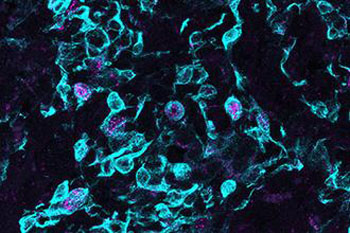Study Explains How Protein Complex Mediates T-cell Development
By Gerald M. Slutzky, PhD
Posted on 30 Nov 2016
A recent paper extended our understanding of how T-cells develop into critical components of the immune system that are able to fight off pathogens without going out of control and triggering an autoimmune response.Posted on 30 Nov 2016
The linear ubiquitin chain assembly complex (LUBAC) is a protein complex that is essential for innate immunity in mice and humans, yet its role in adaptive immunity is unclear. In an effort to better define the role of LUBAC, investigators at the Walter and Eliza Hall Institute (Melbourne, Australia) examined the requirement for each LUBAC component in T-cell and regulatory T-cell (Treg) cell lineages.

Image: A micrograph of cells in the thymus, an organ located just above the heart that trains immune T-cells to defend the body against viruses and bacteria (Photo courtesy of the Walter and Eliza Hall Institute).
Results published in the November 18, 2016, online edition of the journal Nature Communications revealed that LUBAC components HOIP, HOIL-1, and SHARPIN played pivotal roles in late thymocyte differentiation of conventional T-cells, non-conventional T-cells and Treg cell homeostasis. LUBAC activity was necessary for the transcriptional programming of late thymocyte differentiation. LUBAC activity was not required to prevent TNF (tumor necrosis factor)-induced apoptosis or necroptosis but was necessary for the transcriptional program of the final stages of thymocyte differentiation.
"Another interesting aspect of this research relates to rare inherited immune disorders caused by defects in the genes that encode the components of LUBAC," said senior author Dr. Daniel Gray. "Our research has provided new insights into how these disorders are linked to faulty T-cell function. This may inspire to new immune-based therapies for these conditions. We hope that by understanding this process better, we may be able to develop new approaches to "switch off" autoimmune T-cells. This may have therapeutic applications in the future for treating autoimmune diseases."
Related Links:
Walter and Eliza Hall Institute













